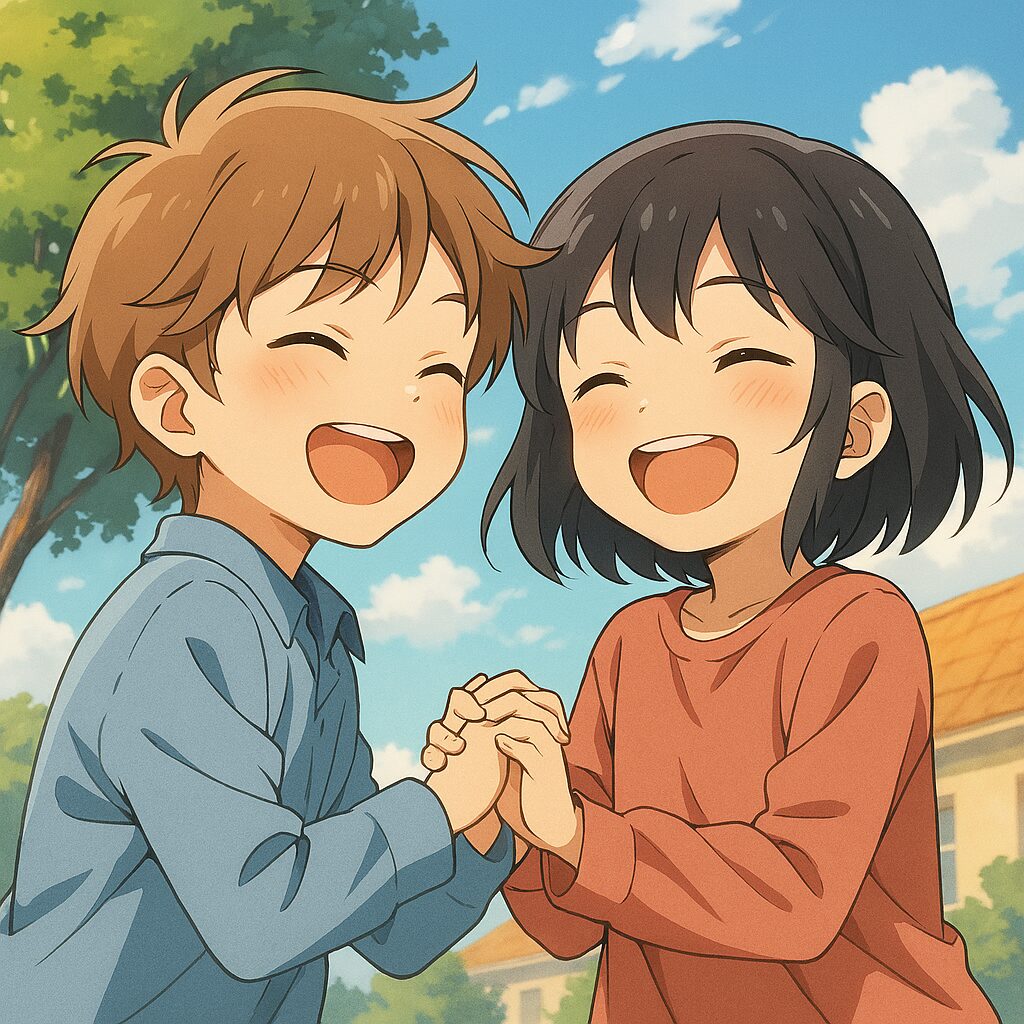A cultural deep dive for international readers exploring Japan’s commemorative days

- Why is September 22 “Orphanage Day”?
- 🏥 What Is an Orphanage?
- 👨⚕️ Juji Ishii – The Father of Japanese Child Welfare
- 📜 Why Were There So Many Orphans in the Meiji Era?
- 🏡 Life in Ishii’s Orphanage
- 🌏 How Did Japan’s Orphanages Differ from the West?
- 🧒 Modern Child Welfare in Japan
- 🕊️ The Meaning of Orphanage Day Today
- 📚 Further Reading and Resources
- はじめに:なぜ「孤児院の日」なのか?
- 🏥孤児院とは?──言葉の定義と世界的な背景
- 👨⚕️石井十次──日本の児童福祉の父
- 📜明治時代の社会背景──なぜ孤児が増えたのか?
- 🏡孤児院の暮らし──石井十次の教育方針
- 🌏海外との比較──日本の孤児院はどう違う?
- 🧒現代の児童福祉──孤児院のその後
- 🕊️孤児院の日の意義──今、私たちにできること
- 📚さらに知りたい方へ──おすすめ外部リンク
Why is September 22 “Orphanage Day”?
Every year on September 22, Japan observes “Orphanage Day” to honor the founding of its first orphanage in 1887. On this day, physician Juji Ishii established the “Orphan Education Society” in Okayama Prefecture, marking a pivotal moment in Japanese child welfare history.
🏥 What Is an Orphanage?
An orphanage is a facility where children who have lost their parents receive shelter, education, and care. While orphanages exist worldwide, their structure and philosophy vary by country.
In Japan today, the term “orphanage” is rarely used. Instead, facilities are referred to as “children’s homes” or “child welfare institutions.” However, in the Meiji era, “orphanage” was the common term.
👨⚕️ Juji Ishii – The Father of Japanese Child Welfare
Juji Ishii was a physician from Miyazaki Prefecture and a Christian social reformer. He gave up his medical career to dedicate himself to caring for orphaned children in Okayama.
His Philosophy
Ishii believed that every child deserves love and education. He saw orphans not as passive recipients of charity, but as future contributors to society.
Founding the Orphan Education Society
On September 22, 1887, Ishii founded Japan’s first orphanage. He invested his own resources, gathered supporters, and provided food, shelter, and education to children in need.
📜 Why Were There So Many Orphans in the Meiji Era?
Japan’s Meiji period was marked by rapid modernization, wars, epidemics, and poverty. Conflicts like the First Sino-Japanese War (1894) and the Russo-Japanese War (1904) led to a rise in war orphans.
With underdeveloped healthcare and social safety nets, many children lost their parents to illness or accidents and had nowhere to turn.
🏡 Life in Ishii’s Orphanage
Ishii emphasized self-reliance and communal living. Children learned the value of work through farming and crafts, and received formal education.
Rather than simply giving aid, Ishii focused on nurturing independence and dignity in every child.
🌏 How Did Japan’s Orphanages Differ from the West?
In Western countries, orphanages were often run by churches or charities and emphasized religious education. In Japan, Ishii’s initiative was driven by personal conviction and later supported by public and private sectors.
Today, both Japan and the West have shifted toward foster care and family-style environments, moving away from institutional orphanages.
🧒 Modern Child Welfare in Japan
Japan’s modern child welfare system includes over 600 children’s homes nationwide, housing around 25,000 children as of 2023. These facilities continue the legacy of Ishii’s work.
Recent efforts promote foster care and family-style group homes to provide more nurturing environments.
▶️ Reference: Ministry of Health, Labour and Welfare – Social Care Facilities
🕊️ The Meaning of Orphanage Day Today
Orphanage Day is more than a historical marker. It’s a reminder that every child deserves safety, love, and opportunity.
Thanks to pioneers like Juji Ishii, Japan’s child welfare system has evolved. And by learning about these efforts, we too can reflect on how to support children in need around the world.
📚 Further Reading and Resources
- Japan Child Welfare Foundation
- Children and Families Agency – Social Care
- NHK Feature – The Reality of Children’s Homes
This article is part of a series introducing Japanese culture and history to global readers. Feel free to share your thoughts or questions!
🇯🇵9月22日は「孤児院の日」──日本の児童福祉の原点をたどる旅
日本の文化や歴史を海外の読者にもわかりやすく紹介するシリーズ
はじめに:なぜ「孤児院の日」なのか?
毎年9月22日は、日本の児童福祉の歴史において特別な意味を持つ「孤児院の日」とされています。この日は、1887年(明治20年)に岡山県の医師・石井十次が日本初の孤児院「孤児教育会」を設立したことに由来します。
🏥孤児院とは?──言葉の定義と世界的な背景
「孤児院(Orphanage)」とは、親を失った子どもたちが生活し、教育や保護を受ける施設のことです。世界中に存在する制度ですが、その形態や理念は国によって異なります。
日本では現在、「児童養護施設」や「福祉施設」と呼ばれることが多くなっていますが、明治時代には「孤児院」という言葉が一般的でした。
👨⚕️石井十次──日本の児童福祉の父
石井十次(いしい じゅうじ)は、宮崎県出身の医師であり、キリスト教の影響を受けた社会活動家でもありました。彼は医師としてのキャリアを捨て、岡山で孤児たちのための施設を立ち上げました。
彼の理念
石井は「すべての子どもには教育と愛が必要だ」と信じていました。彼は孤児たちを単なる保護対象としてではなく、「未来の社会を担う存在」として育てることを目指しました。
孤児教育会の設立
1887年9月22日、岡山にて「孤児教育会」が設立されました。これは日本初の孤児院であり、石井の理念が形となった瞬間でした。
📜明治時代の社会背景──なぜ孤児が増えたのか?
明治時代の日本は、急速な近代化と戦争、疫病、貧困が重なり、多くの子どもたちが親を失いました。特に日清戦争や日露戦争の影響で、戦争孤児が増加しました。
また、当時の医療制度や社会保障は未発達であり、病気や事故で親を失った子どもたちが行き場を失うことも多かったのです。
🏡孤児院の暮らし──石井十次の教育方針
石井の孤児院では、子どもたちに「自立」と「共同生活」の大切さを教えていました。農作業や手工業を通じて働くことの意味を学び、学校教育も受けることができました。
彼は「施し」ではなく「育てる」ことを重視し、孤児たちが社会に出て自立できるよう支援しました。
🌏海外との比較──日本の孤児院はどう違う?
欧米では、孤児院は教会や慈善団体によって運営されることが多く、宗教的な教育が中心でした。一方、日本では石井十次のような個人の情熱によって始まり、徐々に行政や民間団体が関与するようになりました。
現代では、欧米でも「家庭的養育」や「里親制度」が主流となり、孤児院という形態は減少傾向にあります。日本でも同様に、児童養護施設や里親制度が発展しています。
🧒現代の児童福祉──孤児院のその後
現在の日本では、「児童養護施設」が孤児院の役割を担っています。厚生労働省によると、2023年時点で約600の児童養護施設が全国に存在し、約25,000人の子どもたちが生活しています。
また、近年では「里親制度」や「ファミリーホーム」など、より家庭的な環境での養育が推進されています。
▶️参考リンク:厚生労働省|社会的養護の施設等について
🕊️孤児院の日の意義──今、私たちにできること
「孤児院の日」は、単なる記念日ではありません。これは、すべての子どもたちが安心して育つ権利を持っていることを思い出す日でもあります。
石井十次のような人物がいたからこそ、今の日本の児童福祉があるのです。そして、私たち一人ひとりが「子どもたちの未来」に関心を持つことが、社会をより良くする第一歩となります。
📚さらに知りたい方へ──おすすめ外部リンク
この記事は、日本の文化や歴史を海外の読者に伝えることを目的としています。ご意見・ご感想はお気軽にお寄せください。



コメント